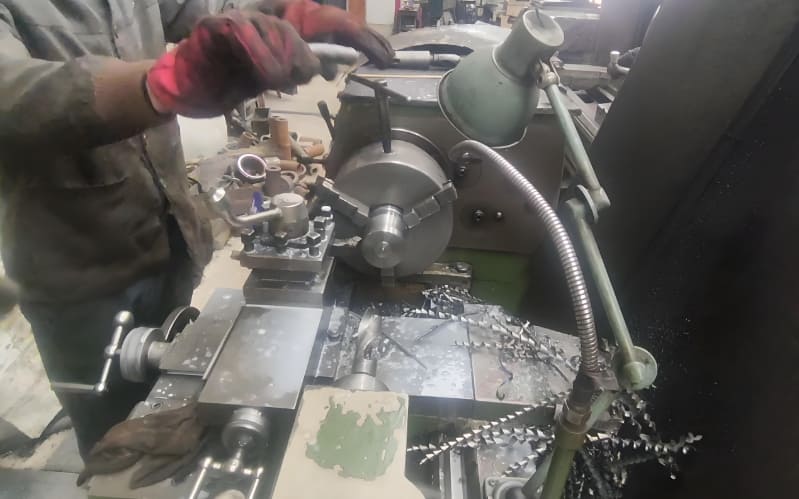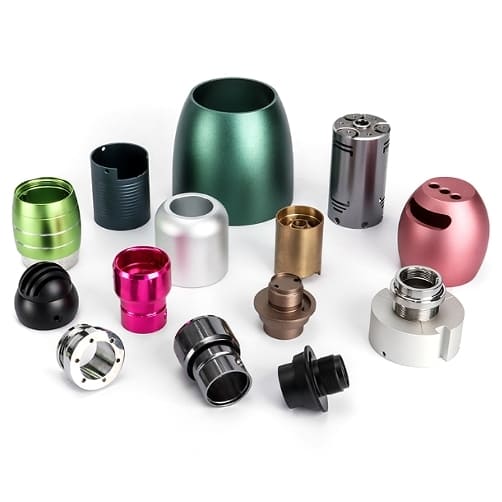Handheld CNC machines offer flexibility, but they also come with serious risks. Many users underestimate these dangers until accidents happen. Understanding the risks can prevent injuries, machine damage, and costly mistakes. So, what are the biggest hazards of handheld CNC machines?
The primary dangers of handheld CNC machines include operator injury, loss of precision, workpiece damage, and safety hazards like flying debris and electrical failures. Proper training and safety measures can minimize these risks.

Let’s break down these dangers and explore how to mitigate them.
How Can Handheld CNC Machines Cause Injuries?
Using a handheld CNC machine without proper precautions can be extremely dangerous. Even experienced users can make mistakes that lead to serious injuries. What are the most common ways people get hurt?
The most common injuries from handheld CNC machines include cuts, burns, eye injuries from debris, and hand strain from prolonged use. Improper handling and lack of protective gear increase the risk.
Common Types of Injuries
- Cuts and Lacerations – The sharp cutting tools on CNC machines can cause deep cuts if mishandled.
- Burns – High-speed cutting generates heat, which can cause burns when touching hot surfaces.
- Eye Injuries – Chips and debris can fly into the operator’s eyes, leading to irritation or even blindness.
- Hand Strain and Fatigue – Prolonged use of handheld CNC machines can cause repetitive strain injuries.
- Hearing Damage – The noise from CNC machines can be loud, potentially causing long-term hearing loss if ear protection isn’t used.
Preventing Operator Injuries
Always wear safety gear, including gloves, goggles, and a face shield.
Secure the workpiece to prevent sudden movements.
Use proper handling techniques to maintain control.
Take breaks to prevent hand fatigue and muscle strain.
Use hearing protection in noisy environments to prevent hearing loss.
Ensure proper ventilation to avoid inhaling fine dust particles generated during cutting.
Can Handheld CNC Machines Affect Precision?
A handheld CNC machine may seem convenient, but it often lacks the precision of a stationary CNC setup. This can lead to inaccuracies that affect the final product.
Handheld CNC machines often suffer from precision issues due to human error, vibrations, and inconsistent pressure. These factors can lead to poor-quality parts and costly material waste.
Factors That Affect Precision
- Human Error – Unlike automated CNC machines, handheld tools rely on operator control, leading to mistakes.
- Vibration and Movement – Any slight hand tremor or vibration can cause deviations in the cut.
- Material Resistance – Some materials require consistent pressure, which is harder to maintain manually.
- Tool Wear – A dull or worn-out cutting tool can negatively impact precision and produce rough edges.
- Inconsistent Speed – Variations in cutting speed can lead to uneven cuts and poor finish quality.
How to Improve Precision with Handheld CNC Machines
Use a stable guide rail to maintain a straight path.
Minimize vibration by securing the workpiece properly.
Practice controlled movements instead of rushing through the process.
Regularly check calibration to ensure accurate cuts.
Use sharp, well-maintained tools to improve cut quality.
Work in a stable, well-lit environment to enhance control and visibility.
What Safety Hazards Do Handheld CNC Machines Pose?
Operating a handheld CNC machine involves multiple safety risks beyond personal injury. Electrical failures, flying debris, and mechanical malfunctions are just a few of the dangers.
Common safety hazards include electrical shocks, fire risks from overheating, and mechanical failures that can lead to unexpected movements or machine damage.
Electrical and Fire Risks
Handheld CNC machines run on electricity, making them susceptible to electrical failures. Frayed wires, poor grounding, or overheating can lead to shocks or even fires.
Safety Tips:
Inspect cables before use.
Avoid using CNC machines in damp environments.
Keep flammable materials away from the work area.
Use a surge protector to prevent electrical damage.
Regularly check the motor for signs of overheating.
Flying Debris and Dust
High-speed cutting produces small chips and fine dust, which can be hazardous if inhaled or if they hit exposed skin.
Safety Tips:
Use dust extraction systems.
Wear a face mask to avoid inhaling fine particles.
Keep a safe distance from rotating parts.
Clean the workspace regularly to prevent dust buildup.
Are Handheld CNC Machines Less Durable?
Handheld CNC machines experience more wear and tear compared to stationary models. Constant movement, exposure to different environments, and manual handling contribute to their shorter lifespan.
Handheld CNC machines tend to wear out faster due to exposure to external forces, inconsistent usage conditions, and manual errors. Regular maintenance is crucial for longevity.
Causes of Wear and Tear
- Frequent Movement – Unlike fixed CNC machines, handheld models are constantly repositioned, leading to mechanical stress.
- Environmental Exposure – Dust, moisture, and temperature changes can affect performance.
- Improper Storage – Leaving a handheld CNC machine in a dusty or humid place accelerates damage.
- Excessive Load – Overloading the machine with materials beyond its capacity can strain the motor and components.
How to Extend the Lifespan of a Handheld CNC Machine
Store it in a clean, dry place.
Regularly lubricate moving parts.
Check for loose components before each use.
Follow the manufacturer’s maintenance guidelines.
Avoid using excessive force to prevent internal component damage.
Can Handheld CNC Machines Damage Workpieces?
Mistakes in handling handheld CNC machines can lead to defective or damaged workpieces, increasing material waste and production costs.
Workpiece damage can occur due to excessive force, incorrect tool speed, improper alignment, or unstable work surfaces. This results in scrapped materials and inconsistent product quality.
How to Prevent Workpiece Damage
Ensure proper alignment before cutting.
Use appropriate cutting speeds and tool settings.
Secure the material properly to prevent shifting.
Choose the correct cutting tool for the material type.
Test cuts on scrap material before working on the final piece.
What Are the Risks of Operator Fatigue?
Long hours of handheld CNC machining can cause hand fatigue, reducing control and increasing the risk of errors.
Operator fatigue leads to reduced accuracy, slower reaction times, and an increased likelihood of mistakes or accidents.
Preventing Operator Fatigue
Take regular breaks.
Use ergonomic grips to reduce hand strain.
Rotate tasks among operators to avoid repetitive stress injuries.
Stretch hands and fingers periodically to improve circulation.
Work in a comfortable, well-positioned stance to minimize body strain.
Can Improper Tool Selection Increase Risks?
Choosing the wrong cutting tool can lead to inefficient machining, workpiece damage, and even safety hazards.
Incorrect tool selection can cause excessive wear, overheating, and poor cut quality, increasing risks for both the operator and the machine.
How to Choose the Right Tool
Match the tool to the material being cut.
Consider tool speed and feed rate compatibility.
Regularly inspect tools for signs of wear.
Use carbide or diamond-tipped tools for harder materials.
Follow manufacturer recommendations for optimal tool performance.
Conclusion
Handheld CNC machines are useful but come with risks, including injuries, precision loss, and safety hazards. Proper handling, maintenance, and protective measures can prevent accidents and improve performance. By understanding these risks and implementing safety precautions, users can maximize efficiency while minimizing potential dangers.
